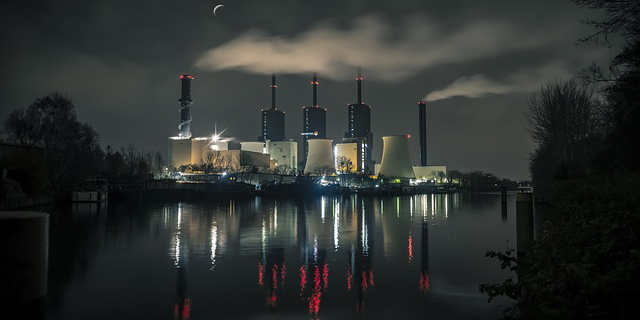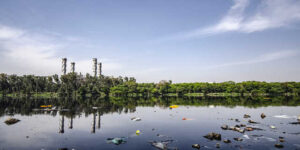This article is about Industries that Contribute Most to Water Pollution. A lot of industries exist now than they did a few decades ago. One major characteristic of industries is that they extract a lot of resources from the environment and what follows after this is the release of a lot of wastes. United Nations has produced a study that proves that 80% of wastewater goes back into the environment without treatment.
According to unwater.org, industrial water consumption encompasses 22% of global water use and most of the resultant water released into the environment is polluted water. The wastewater produced majorly encompasses sewage wastewater.
Water pollution has become a major problem in our current society as a lot of wastes from industries are getting their way into our water sources, limiting the amount of clean water available for daily use. Over the years there have been notorious industries that have greatly contributed to water pollution and these include:
1. The Agricultural Industry.
According to the Food and Agriculture Organization, (FAO) agriculture takes up to 70% of available water resources for its use. This water is used in food and animal production. In food production the water is used for irrigation while in the animal production it is used for animal rearing.
When the synthetic fertilizers and pesticides used to increase crop production are used in excess, they find their way into water sources through surface run off. These fertilizers are rich in Nitrogen and Phosphorus which in excess can lead to eutrophication of water bodies leading to dead zones in aquatic ecosystems.
These synthetic fertilizers are also high in heavy metals e.g. Mercury and Cadmium. These heavy metals and nutrients also pollute underground water through seepage and infiltration into the underground aquifers. The heavy metals have also been proven to bio-accumulate in aquatic organisms while the Nitrogen and Phosphorous nutrients have been detected in portable drinking water.
Land cultivation practices e.g. tilling and ploughing lead to sedimentation of water sources when inorganic solids are washed and swept into water sources.
2. The Fashion and Textile Industry.
The fashion industry has evolved throughout the years in terms of how people choose to express themselves through what they wear and what materials get used to make clothing items. A new concept of ‘fast fashion’ has emerged, where manufacturers are turning to cheap material to make clothes. These materials are majorly composed of microplastics which are a major water pollutant especially in our oceans, lakes and seas.
The textile manufacturers are also using synthetic dyes to make these pieces of clothing. These chemicals sometimes find their way into the aquatic ecosystems degrading the water quality and killing aquatic life.
3. The Technological Industry.
The tech industry has proved really essential in our day to day lives as it has enabled production of machines that make work easier. This industry has also presented a major challenge which is electronic waste, commonly known as e-waste. The Environmental Protection Agency tried to come up with regulations on how to handle e-waste but there is still a problem especially in the developing countries where some countries don’t have the capacity to deal with such waste.
The waste is thrown into open dumps and left for years and years. This e-waste is majorly composed of computer parts made up Mercury and other toxic heavy metals are washed into rivers and lakes by surface run off. They also contaminate underground water when they seep into the ground.
4. The Food processing Industry.
This is a notorious industry in terms of water pollution. The food industry extracts a lot of resources from the environment to process food. Due to population increase, there has been an increase in food consumption which has consequently led to the increase in food production.
According to FAO, 16% of all food produced goes to waste. This is discouraging considering the amount of resources used to produce food. Food processing industries produce a lot of waste including packaging wastes, organic wastes from food, excessive heat from processes etc. The by-product of most food processes is a high concentration of organic nutrient waste. When this waste is released into water bodies, it results in nutrient enrichment leading to eutrophication of these ecosystems.
5. The Recreation Industry.
After the Covid-19 pandemic is over most people are looking forward to going away on holidays most probably to the beach. Water-based recreational activities have been proven to contribute to some form of water pollution. This form of pollution includes, oil spillages from engines of water boat motors, sanitation discharges, debris which result from fishing gear, and food packaging etc. The oils and grease from water boat engines pollute water by creating an oil film on the water surface limiting absorption of oxygen which leads to suffocation of aquatic life.
Body creams used during recreational water activities have also been proven to pollute water. A city in the U.S banned a certain type sunscreen cream because of it was proven to kill most of the coral reefs in that aquatic system. This is one of the Industries that Contribute Most to Water Pollution.
6. The Mining Industry.
This is one of the industries that depend on extraction of resources from the environment. Depending on the nature of what is being mined, these industries have different ways in which they pollute water. Sulphur-laden water that has leached from mines that produce Sulphur has led to the acidification of most lakes in Canada, Europe and Scandinavia. Acidified lakes cannot support aquatic life. Mining also contributes to sedimentation of lakes through surface run off. This is one of the Industries that Contribute Most to Water Pollution.
7. The Transport Industry.
Motor vehicle transportation has posed a huge water quality problem. When fuel burns it produces an array of toxic gases and particulate matter e.g. CO2 and N2O. These gases are left suspended in the atmosphere while the particulate matter is left stuck on the road or buildings or pavements. When it rains, these toxic gases dissolve in stormwater and are washed or transported by highway surface run off to water sources.
Oil leakages from underground storage tanks are a major source of underground water pollution. This compromises the quality of drinking water. Improper disposal of oil products can also lead to water pollution. This is one of the Industries that Contribute Most to Water Pollution.
8. The Energy generation Industries.
Many energy generation industries use a lot of water and release a lot energy and chemical waste through their different energy production processes e.g. through fracking. Fracking is extracting oil or natural gas from rock, this process uses a large amount of water and the waste produced is full of chemicals that pollute underground water.
Most energy generation activities produce a lot of heat from their power plants and this heat when released into the environment will cause thermal pollution. This heat will alter the normal temperature of aquatic systems and even kill aquatic life. This is one of the Industries that Contribute Most to Water Pollution.
9. The Building and Construction Industry.
The construction industry hugely extracts water and other environmental resources for building. First of all, when a new construction project is started, land must be cleared to give way for the project. During the construction a lot of sediments are let loose and if soil erosion is not controlled, these sediments will find their way into water sources through surface run off, resulting in sedimentation pollution.
Some of the construction practices involve usage of toxic chemicals e.g. leaded paints, diesels and oils. If the materials used and wastes produced during construction are not disposed in an environmentally sensitive way, they will end up in water sources causing pollution. This is one of the Industries that Contribute Most to Water Pollution.
10. The Pulp and Paper Industry (Industries that Contribute Most to Water Pollution).
It’s worth noting that this industry has really made advances in promoting cleaner production processes in their system over the years. Still some developing countries are struggling to implement those cleaner production processes due to financial constraints and lack of a good policy to implement them. This has led to continued pollution of water resources by this industry.
A lot of wood is used in the paper industry therefore the resultant waste stream is rich in pulp. When the waste is let into water sources there is increased turbidity in those aquatic ecosystems. This becomes detrimental to aquatic life as turbidity decreases visibility in water and limits the absorption of solar radiation and oxygen in these ecosystems.
A lot of acids are used in treating pulp and these acids usually released in the waste stream. When this kind of waste gets into water sources, it will acidify the water rendering it unfit for normal use and for aquatic life. This is one of the Industries that Contribute Most to Water Pollution.
Reference
- Biswas, A. K., & Tortajada, C. (2019). Water crisis and water wars: myths and realities.
- UNEP 2010.
- FAO 2009.
- Sick Water, org.







